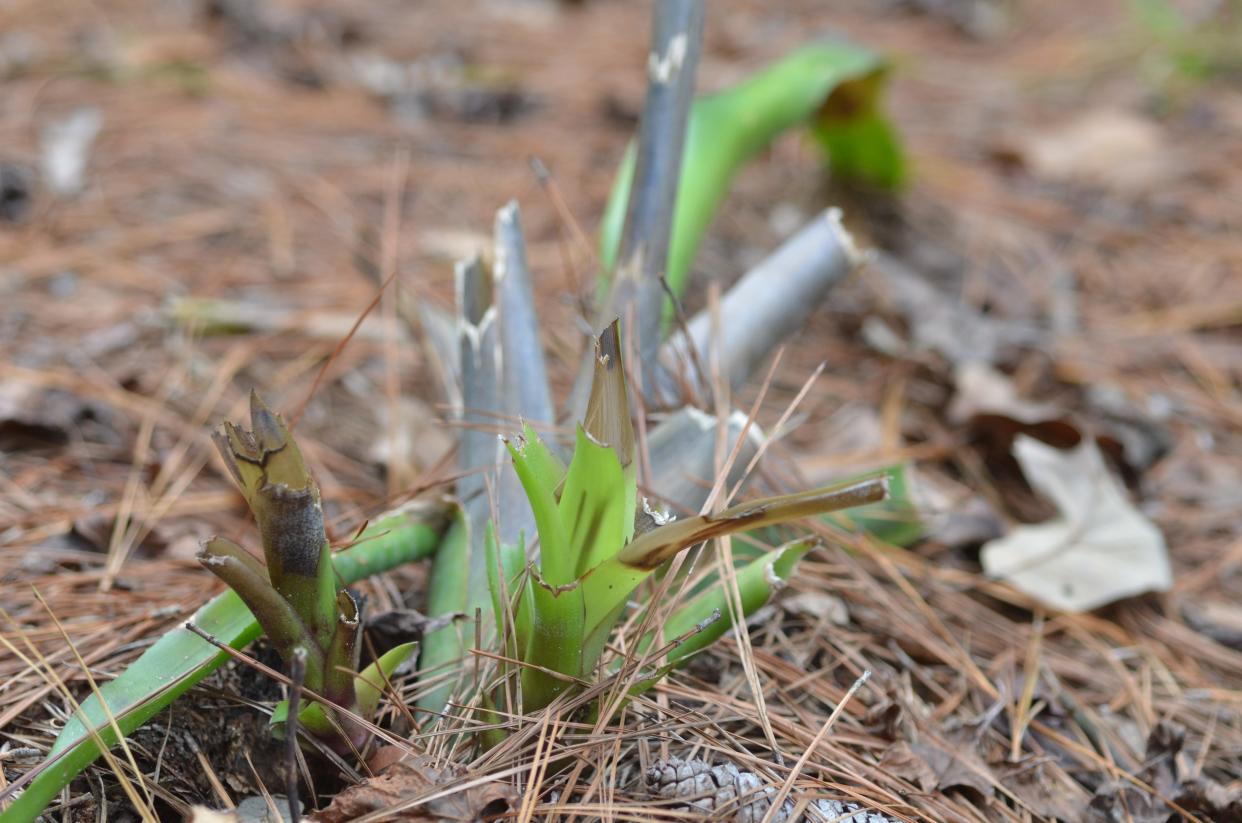When pickings are lean, Florida's white-tailed deer will snack in your yard

Anyone who has been responsible for children knows the reality of juvenile appetites. Their hunger is constant, their preferences often picky and rarely is there any obvious uniformity in tastes between siblings or playmates.
It may be as simple as the condiments on a sandwich or the selection of an entree, but there is never consistency between individuals when there are many offerings available.
When options are reduced and true hunger arrives, everything changes.
Plant a redbud: Here's what to do in the garden in January and February
Arbor Day: Celebrate Florida Arbor Day with tree planting, tree giveaways
Toxic plants: Learn what common plants in home gardens can poison your pets
At that juncture almost anything will do. There will be some complaining and waste, but they will eat the available substance.
Such is the case with white-tailed deer, a native herbivore, which stray into suburbia during the depths of North Florida’s winter. The range of ornamental landscape plants at many homes are a seasonal salad bar for these uninvited diners.
Odocoileus virginianus osceolais is the scientific name of the white-tailed deer sub-species living in much of Leon County. It is a member of the Cervidae family which includes moose, elk, and reindeer.
The white-tailed deer’s home range extends from Canada to Peru. There are more than 40 subspecies which cover this territory, each with their own unique traits and behavior.
The first fossil records of deer date back to the Oligocene epoch about 30 million years ago. These early European deer were small by contemporary standards, but they grew to impressive dimensions over time.
The Irish elk was the largest of these early deer. It stood about seven feet at the shoulder and had a 12-foot-wide set of antlers, and likely had an appetite to support its size.
The origin of the term deer dates back to Old English and was applied to any kind of wild animal. Over the decades the use was refined to only members of the Cervidea family.
The State of Florida hunting season generally coincides with the white-tailed deer’s mating season, locally known as the rut. During this period the deer are very active and move around frequently, so hunting or not, deer sightings increase.
It is also the time of year when many native foliage sources are in short supply. As such, less favored but available landscape shrubs become a meal prospect.
It is common to see a herd of does, some with yearling fawns in fields, pastures, highway shoulders and on residential lawns. This attraction to residential lunchrooms also increases the chances of deer and vehicle collisions.
A buck’s behavior patterns are quite a different story. During most of the year, they are missing antlers and stay in isolated small groups of exclusively males.
During late spring the antlers begin to develop. They are covered with a thin living tissue containing many blood vessels and which is commonly referred to as velvet.
During this period mature males begin to separate and lead solitary lives. They occasionally can be seen in pairs but are usually in competitive pursuit of one or more does.
The skittish males may resort to consuming some home horticulture options, but meals are not the focus of their interests during this period. In many cases they will follow does into a residential setting and nibble after the females have departed.
After rut, the buck’s antlers are shed and consumed by insects. The gestation period ends with the fawns arriving in time to enjoy spring’s flush of tender plant growth in the wild, returning to subdivision landscapes only if a preferred meal is there.
The often-asked question: “Are there any deer-proof landscape plants?” Unfortunately, (at least for most human residents) the answer is no. Like children, the deer will eat almost anything when necessary.

To learn more about wildlife’s effect on landscapes in Tallahassee, Fort Braden and Leon County, contact the nearest UF/IFAS County Extension Office. To read more stories by Les Harrison visit: Outdoorauthor.com and follow me on Facebook.
Les Harrison is a UF/IFAS Wakulla County Extension Agent Emeritus.
Never miss a story: Subscribe to the Tallahassee Democrat using the link at the top of the page.
This article originally appeared on Tallahassee Democrat: Hungry white-tailed deer find plants to munch in your yard

